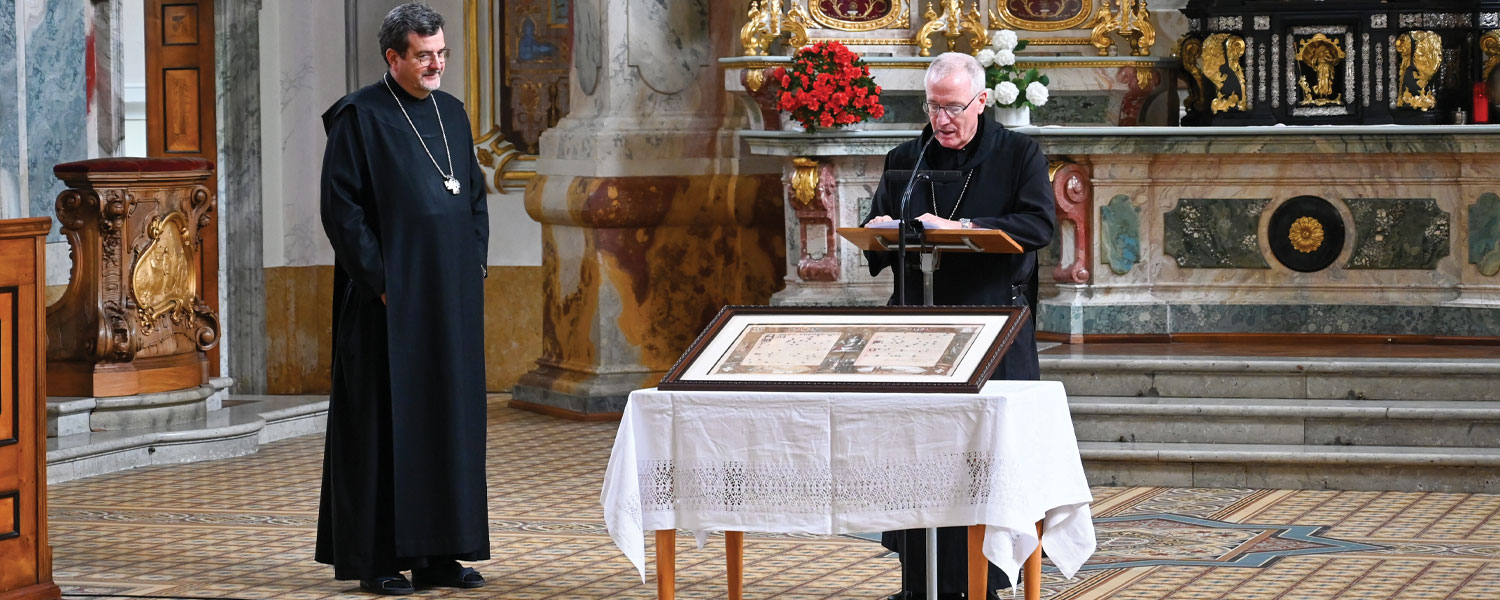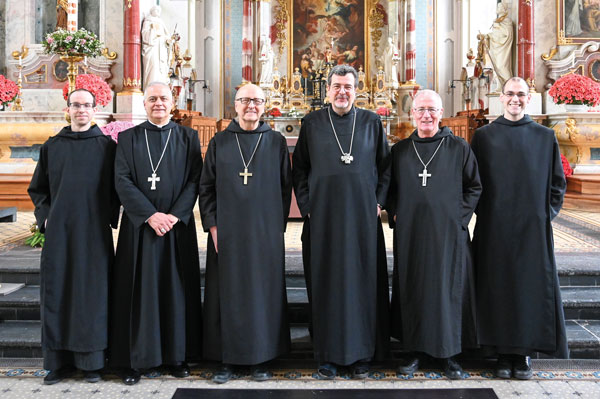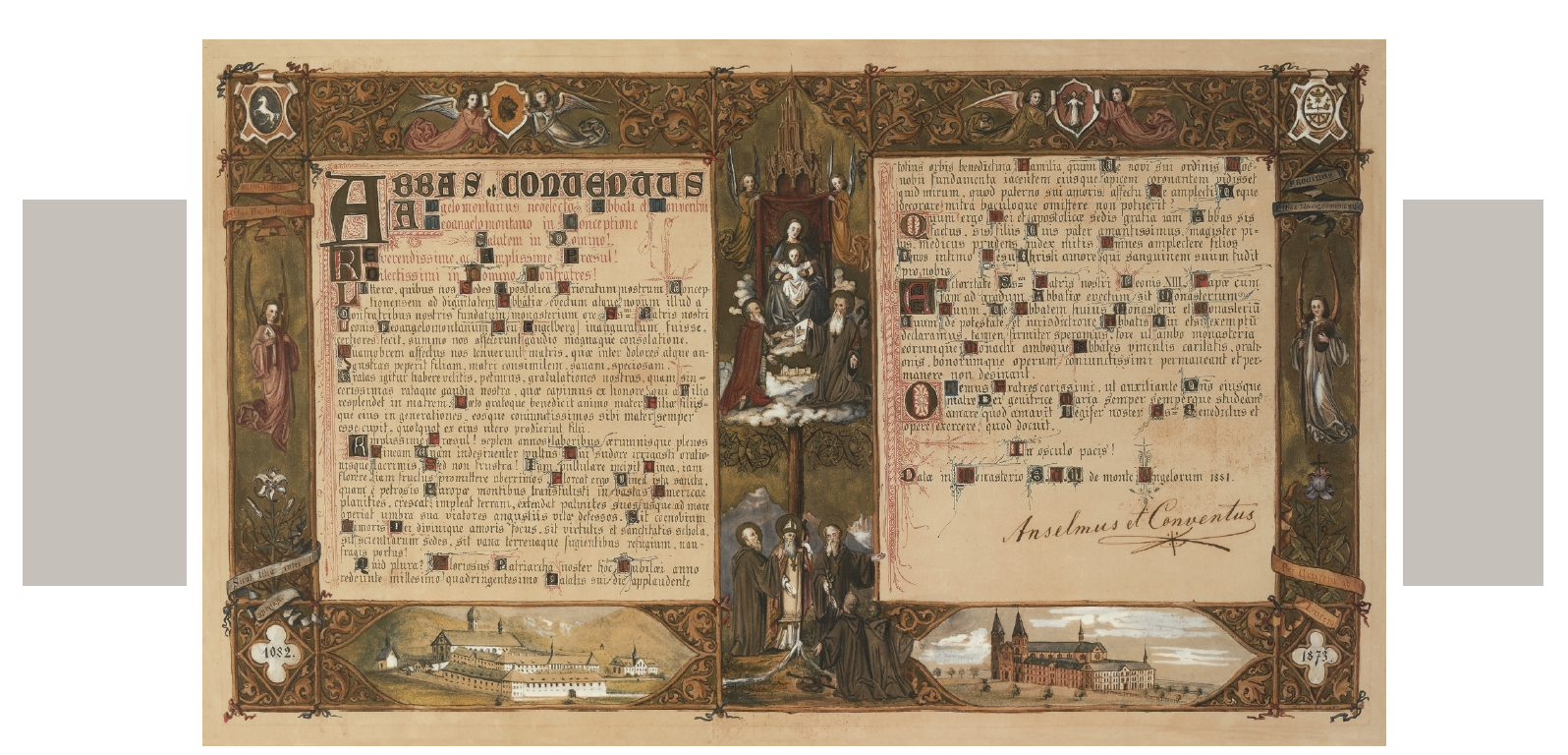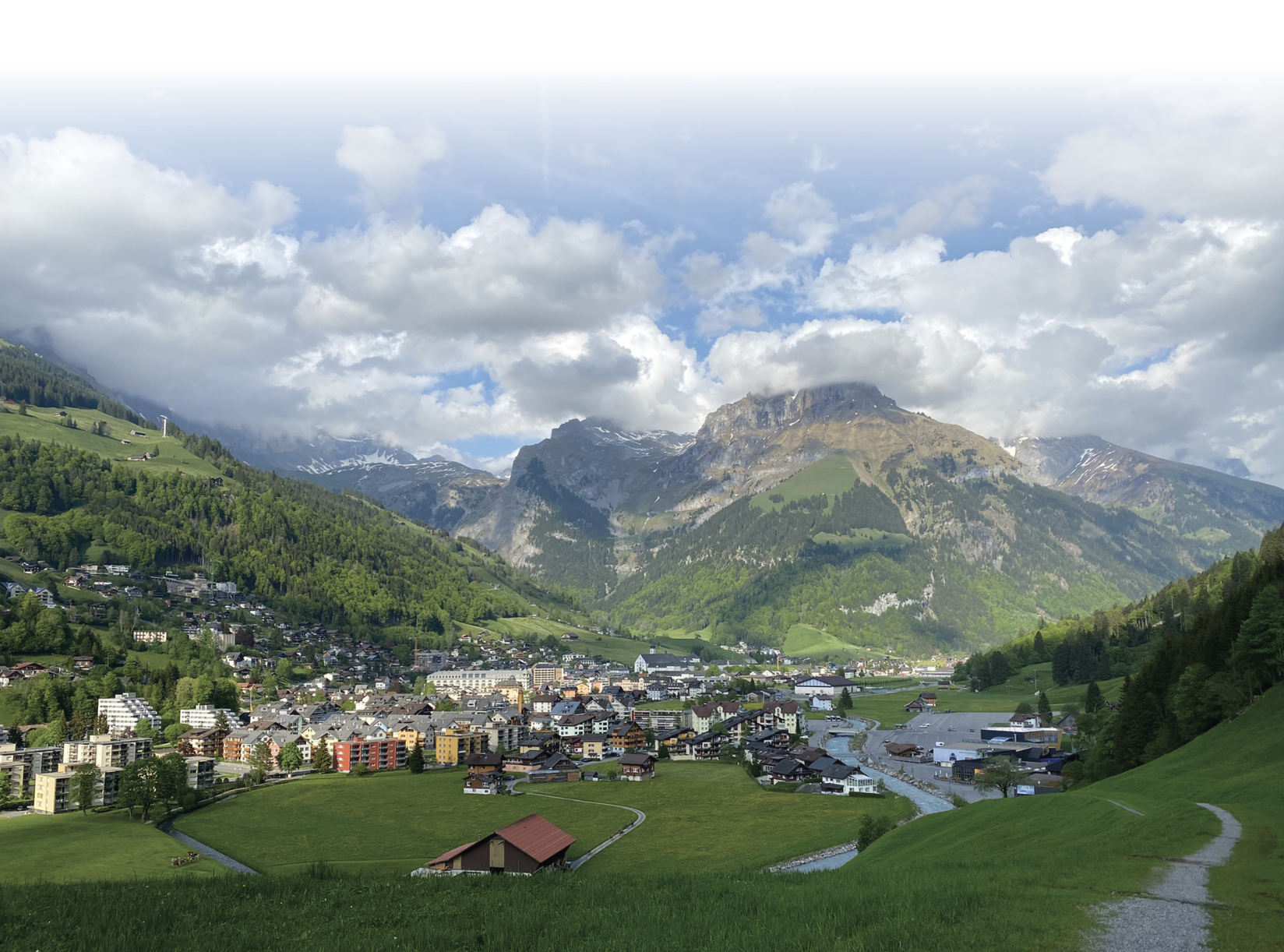
Journey to our Motherhouse
In 2020, Abbot Gregory Polan and I planned to lead a group of pilgrims to celebrate the 900th anniversary of the founding of our Swiss motherhouse, Engelberg Abbey, to visit several other monasteries in Switzerland and Germany, and to attend the Passion Play in Oberammergau, Germany, which is only performed every 10 years. The pandemic delayed the trip by two years, but it was well worth the wait.
 In addition to Abbot Gregory and me, our group included Abbot Donato Ogliari, OSB, of Monte Cassino in Italy, our two youngest monks, Br. Simeon and Br. Mark, and about 20 other friends of the Abbey. As a gift, we presented to the Engelberg community a copy of the original memorial they sent to us in 1881, on the occasion of Conception becoming an independent abbey. Since that document expressed well the bond that
In addition to Abbot Gregory and me, our group included Abbot Donato Ogliari, OSB, of Monte Cassino in Italy, our two youngest monks, Br. Simeon and Br. Mark, and about 20 other friends of the Abbey. As a gift, we presented to the Engelberg community a copy of the original memorial they sent to us in 1881, on the occasion of Conception becoming an independent abbey. Since that document expressed well the bond that
existed between the two communities from the beginning, we thought it fitting to renew and remind one another of that 150-year-old tie that continues to unite us.
Our visits to Einsideln Abbey and the former Abbey of St. Gaul in Switzerland and Ettal Abbey in Germany increased our sense of the cultural and spiritual influence Benedictines have had through the centuries. Attendance at the five-hour-long Passion Play in Oberammergau, separated into two parts by a break with supper, reminded us of the foundation, not only of our monastic vocation, but of our Christian religion, by the artistic representation of the life, passion, death and resurrection of our Lord Jesus Christ. It was because of that event and central mystery of our faith, that monks left Switzerland to bring the gospel of Jesus Christ to a New World.
— Abbot Benedict Neenan, OSB
Gift to New Engelberg (Now Conception Abbey)
When the monks of the Swiss Abbey of Engelberg learned in 1881 that their Missouri daughter-house was elevated to the status of an abbey and that its founder, Frowin Conrad, would be New Engelberg’s first abbot, they commissioned a memorial communicating their joy at the good news. The memorial took the form of a diptych with a bifurcated frame surrounding a congratulatory text signed by Engelberg’s Abbot Anselm Villiger, OSB.
The central piece of the frame shows in the upper part a seated Blessed Virgin holding the Christ Child. She appeared to Count Conrad of Sellenbüren (shown kneeling at her feet) and indicated where the monastery of Engelberg was to be built. Alongside Conrad is Adelhelm of Muri, Engelberg’s first abbot. The lower portion of the center piece presents three standing haloed figures, Frowin, Berchtold, and Adelhelm, all three venerated as saints of Engelberg. At the feet of the three blesseds are two kneeling figures, Frs. Frowin Conrad and Adelhelm Odermatt, sent by Engelberg to found a house of refuge in the New World; their missionary status is indicated by a pilgrim’s hat and walking stick on the ground next to them.

Above each text block are heraldic arms presented by angels: on the left is the arms of Count Conrad (a bear) and on the right the arms of the abbey of Engelberg (a standing angel). Below the text on the left is a representation of Engelberg and on the right an image of the planned monastic complex at Conception.
The upper corners show on the left and right the arms (a unicorn) of Abbot Anselm of Engel-berg and those of Abbot Frown Conrad of New Engelberg (featuring half of a wheel). Below each of the corner arms are banderoles naming the two abbots. Below each of these names are standing angels holding a miter and crosier on the left and a pilgrim’s hat and staff on the right.
Below each of the angels are two flowers: on the left a lily illustrating Anselm Villiger’s abbatial motto, “Sicut lilia inter spinas” (“Like a lily among thorns”), and on the right a passion flower surmounted by a cross harmonizing with Frowin Conrad’s motto, “Per crucem ad lucem” (“Through the cross to the light”). The lower corners of the outer frames present two quatrefoils with the dates: “1082” on the left and “1873” on the right. The first, “1082,” was mistakenly thought to have been Engelberg’s foundation date (which now is understood as 1120). The right hand date, “1873,” marks the date of New Engelberg’s foundation.
The choice of images the artist used in the diptych highlight the foundation narratives of both Engelberg and New Engelberg as well as the persons of the founding abbots, Anselm Villiger and Frowin Conrad.
— Br. Thomas Sullivan, OSB
*article found in Summer 2022 issue of Tower Topics

Posted in General, Monastery News
